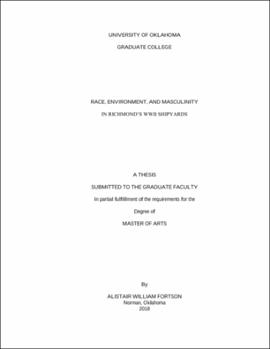| dc.description.abstract | The Kaiser company shipyards in Richmond, California, the largest shipyards in the world for the duration of World War II, employed workers from across America and from around the world. New technological advances and hiring practices meant women, alongside African Americans and Indigenous persons, entered heavy industry work in large numbers and earned wages far higher than those available before. These circumstances have been portrayed in the popular history of the United States as a part of the ‘Good War’ ideal, where all worked together for common goals, and Kaiser’s company advertised using these slogans. However, the ‘Good War’ framework elides the environmental damage, toxicity to land, water, and human bodies, and lasting racial segregation resulting from industrial production in Richmond. Unions in the region continued to segregate their local chapters, limited minorities from theoretically unsegregated federal housing projects, and prevented minority workers from voting in union matters. White men in the shipyards, who saw themselves as patriots and soldiers of production in the war against fascism and racism abroad, nonetheless felt threatened by female and minority ‘usurpers’ to their traditional role as industrial workers. Executives encouraged these men to confirm their masculinity outside of the military, through the use of patriotic symbolism, patriarchal leadership, and sports. This thesis thus demonstrates the paradoxical impact of social forces, including the mythical conceptions of the West and a desire, on the part of women and racial minorities, to defeat Nazism abroad and racism and sexism at home. The yards closed in 1945, and despite the cooperation of diverse former workers, the failed General Strike of 1946 illustrates racial animus that continues to affect residents of Richmond today. | en_US |
